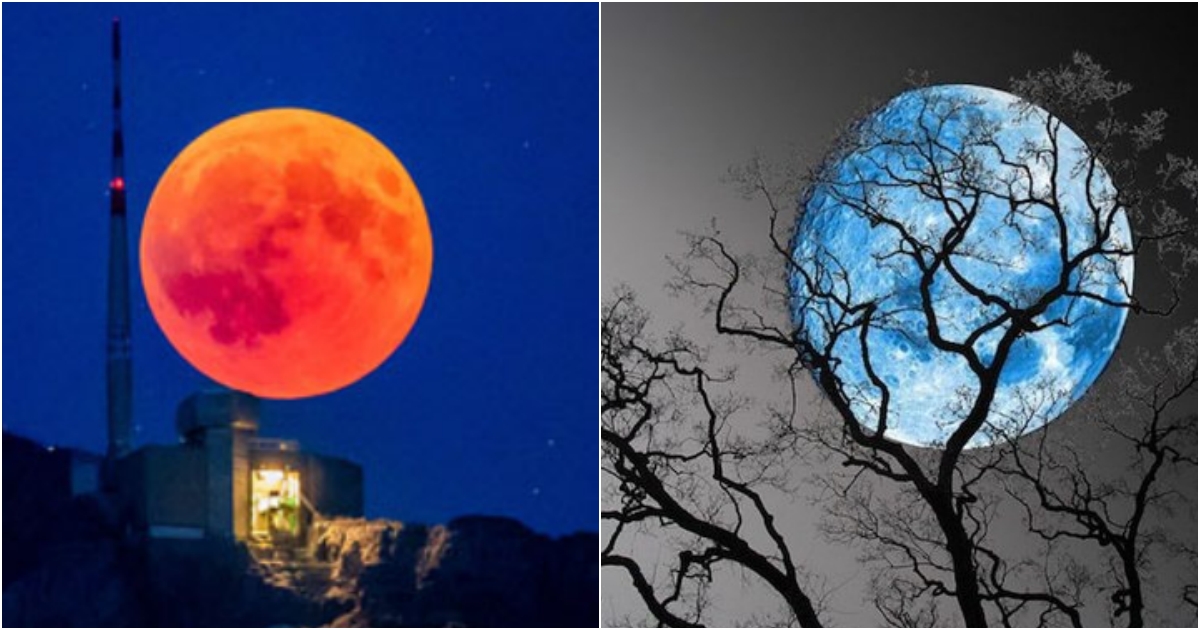
The phenomenon of a Blood Moon captures the imagination and stirs ancient fears. This captivating event occurs when a total lunar eclipse coincides with the moon’s closest approach to Earth. As a result, the moon appears larger, brighter, and takes on a breathtaking red hue. It’s a spectacle that intertwines the beauty of celestial mechanics with the dark tendrils of ancient prophecies and folklore.
A Rare Celestial Event

A Blood Moon is not just a stunning natural event; it’s a celestial ballet where the sun, Earth, and moon align perfectly, cloaking the moon in a striking red shadow. This event is rare enough to command attention, not just for its beauty but for the historical and cultural significance placed upon it by civilizations past and present.
Prophecies and the Blood Moon

From the vivid apocalyptic scenarios described in the Bible to the ominous signs in the Buddhist “Great Treasure Sutra,” the Blood Moon has been seen as a harbinger of disaster and chaos. These ancient texts speak of the sun darkening and stars falling, symbolizing tumultuous times ahead. It’s a reminder of the awe and fear such celestial events have inspired throughout human history.
A Warning from the Past?

In recent history, the appearance of a Blood Moon has been followed by significant global events. For instance, the Blood Moon on January 11, 2020, marked not only a transition between years but also preceded the widespread outbreak of COVID-19, a pandemic that claimed countless lives worldwide. Following this, natural disasters, economic struggles, and social unrest seemed to cascade one after the other. Could this have been a modern-day fulfillment of ancient warnings?
Blood Moon Over Northern Taiwan

Taiwan experienced its own foreboding Blood Moon on March 29, 2021. Following ancient beliefs that a change in the moon’s color portends disaster, many were filled with apprehension. Their fears seemed justified when, just days later, a tragic train derailment occurred, causing widespread injury and sorrow.
The Largest Blood Moon of the Year

Meteorologists and astronomers have pinpointed May 26 as the date when this year’s largest Blood Moon will grace our skies. This event promises a rare total lunar eclipse that will be visible across large parts of Oceania, North America, South America, and East Asia. In places like New Zealand, viewers will have the opportunity to witness the entire eclipse, a truly rare and awe-inspiring opportunity.
Folklore and Religious Views
Throughout history, the Blood Moon has been seen as a bad omen, symbolizing evil and calamity. In Chinese folklore, for example, a blood-red moon is seen as the moon being devoured by a celestial beast, heralding bloody disaster. Such interpretations underscore the deep-rooted human instinct to find meaning and warning in the movements of the celestial bodies.
The Blue Moon Phenomenon

Contrasting the ominous Blood Moon, the Blue Moon represents an excess in the lunar cycle, occurring approximately every 2.7 years. Though not linked with dire prophecies, the rarity of a Blue Moon also highlights the human fascination with unusual celestial events and their impact on culture and belief systems.
As we witness these celestial spectacles unfold, they serve as a reminder of our place in the universe and the continuing human quest to understand the cosmos and our role within it. Whether seen as ominous omens or breathtaking natural phenomena, events like the Blood Moon continue to fascinate and inspire awe across cultures and generations.





